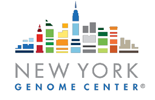Submitted by ja607 on
| Title | Cardioembolic Stroke Risk and Recovery After Anticoagulation-Related Intracerebral Hemorrhage. |
| Publication Type | Journal Article |
| Year of Publication | 2018 |
| Authors | Murphy, MP, Kuramatsu, JB, Leasure, A, Falcone, GJ, Kamel, H, Sansing, LH, Kourkoulis, C, Schwab, K, Elm, JJ, M Gurol, E, Tran, H, Greenberg, SM, Viswanathan, A, Anderson, CD, Schwab, S, Rosand, J, Shi, F-D, Kittner, SJ, Testai, FD, Woo, D, Langefeld, CD, James, ML, Koch, S, Huttner, HB, Biffi, A, Sheth, KN |
| Journal | Stroke |
| Volume | 49 |
| Issue | 11 |
| Pagination | 2652-2658 |
| Date Published | 2018 Nov |
| ISSN | 1524-4628 |
| Abstract | Background and Purpose- Whether to resume oral anticoagulation treatment after intracerebral hemorrhage (ICH) remains an unresolved question. Previous studies focused primarily on recurrent stroke after ICH. We sought to investigate the association between cardioembolic stroke risk, oral anticoagulation therapy resumption, and functional recovery among ICH survivors in the absence of recurrent stroke. Methods- We conducted a joint analysis of 3 observational studies: (1) the multicenter RETRACE study (German-Wide Multicenter Analysis of Oral Anticoagulation Associated Intracerebral Hemorrhage); (2) the Massachusetts General Hospital ICH study (n=166); and (3) the ERICH study (Ethnic/Racial Variations of Intracerebral Hemorrhage; n=131). We included 941 survivors of ICH in the setting of active oral anticoagulation therapy for prevention of cardioembolic stroke because of nonvalvular atrial fibrillation and without evidence of ischemic stroke and recurrent ICH at 1 year from the index event. We created univariable and multivariable models to explore associations between cardioembolic stroke risk (based on CHADS-VASc scores) and functional recovery after ICH, defined as achieving modified Rankin Scale score of ≤3 at 1 year for participants with modified Rankin Scale score of >3 at discharge. Results- In multivariable analyses, the CHADS-VASc score was associated with a decreased likelihood of functional recovery (odds ratio, 0.83 per 1 point increase; 95% CI, 0.79-0.86) at 1 year. Anticoagulation resumption was independently associated with a higher likelihood of recovery, regardless of CHADS-VASc score (odds ratio, 1.89; 95% CI, 1.32-2.70). We found an interaction between CHADS-VASc score and anticoagulation resumption in terms of association with increased likelihood of functional recovery (interaction P=0.011). Conclusions- Increasing cardioembolic stroke risk is associated with a decreased likelihood of functional recovery at 1 year after ICH, but this association was weaker among participants resuming oral anticoagulation therapy. These findings support, including recovery metrics, in future studies of anticoagulation resumption after ICH. |
| DOI | 10.1161/STROKEAHA.118.021799 |
| Alternate Journal | Stroke |
| PubMed ID | 30355194 |
| PubMed Central ID | PMC6211810 |
| Grant List | R01 AG026484 / AG / NIA NIH HHS / United States K23 NS086873 / NS / NINDS NIH HHS / United States U24 NS107136 / NS / NINDS NIH HHS / United States R01 NS097728 / NS / NINDS NIH HHS / United States UM1 HG008895 / HG / NHGRI NIH HHS / United States UL1 TR001863 / TR / NCATS NIH HHS / United States K23 NS083711 / NS / NINDS NIH HHS / United States P30 AG021342 / AG / NIA NIH HHS / United States P50 NS051343 / NS / NINDS NIH HHS / United States R01 NS103924 / NS / NINDS NIH HHS / United States U01 NS069763 / NS / NINDS NIH HHS / United States R01 NS095993 / NS / NINDS NIH HHS / United States U24 NS107215 / NS / NINDS NIH HHS / United States K23 NS100816 / NS / NINDS NIH HHS / United States R01 NS093870 / NS / NINDS NIH HHS / United States R01 NS036695 / NS / NINDS NIH HHS / United States R24 NS092983 / NS / NINDS NIH HHS / United States |




